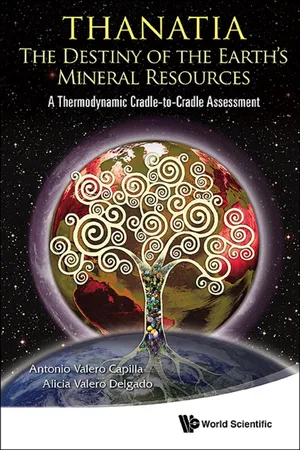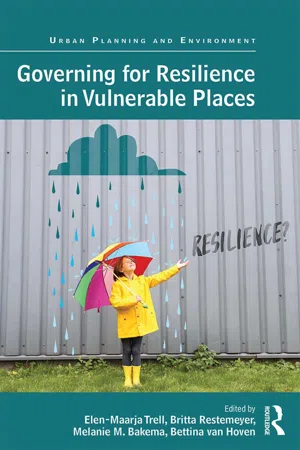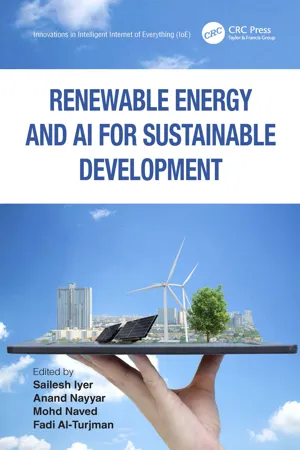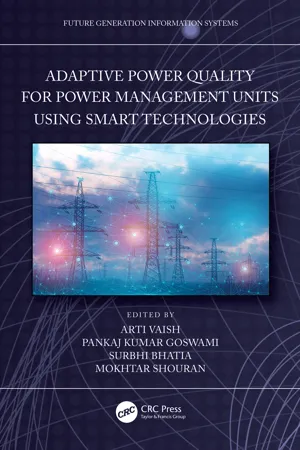Geography
New Energy Resources
New energy resources refer to alternative sources of energy that are being developed and utilized to reduce reliance on traditional fossil fuels. These resources include solar, wind, hydroelectric, geothermal, and biomass energy. They are considered more sustainable and environmentally friendly, and are increasingly being integrated into energy production to address concerns about climate change and energy security.
Written by Perlego with AI-assistance
Related key terms
5 Key excerpts on "New Energy Resources"
- eBook - ePub
Thanatia: The Destiny Of The Earth's Mineral Resources - A Thermodynamic Cradle-to-cradle Assessment
A Thermodynamic Cradle-to-Cradle Assessment
- Antonio Valero Capilla, Alicia Valero Delgado(Authors)
- 2014(Publication Date)
- WSPC(Publisher)
Chapter 6 The Resources of the Earth 6.1 IntroductionIn this chapter, a deeper look at the Earth’s components deemed useful to Man is undertaken. Consequently, a revision of energy and non-energy resources is carried out. This information will serve in a later chapter for assessing the exergy of the main resources on Earth. Energy resources have been divided into energy originating from the solid Earth i.e. nuclear and geothermal; tidal; and that derived from the sun, including solar, hydroelectricity, wind, biomass and hydrocarbons. After a general description of each, it shows all of the potentially available resources that Nature provides, those which could be effectively obtained using technology into the near future and those which are used today. In addition, mineral resources are studied, highlighting their abundance and average crustal concentration.6.2 Natural resources: definition, classification and early assessmentsA natural resource can be defined as any form of matter or energy obtained from the environment that meets a human need. Therefore water, air, oil, biomass or minerals are classified as such. Natural resources are frequently categorised as renewable or non-renewable. The former are defined as those that are regenerated within a human time scale. Examples include hydro, biomass or solar energy. On the contrary, the latter can be considered a stock that has a regeneration rate of zero over a relatively long period as is the case of minerals (Lujula, 2003).Minerals can be further classified as fuel and non-fuel resources. Fuel resources are those from which energy can be potentially extracted i.e. coal, oil, natural gas or uranium. Non-fuel minerals include metals and industrial minerals.An early assessment of the renewable and non-renewable energy resources on Earth was undertaken by Hall et al. (1987) and can be seen in Table 6.1 - eBook - ePub
- Elen-Maarja Trell, Britta Restemeyer, Melanie M. Bakema, Bettina van Hoven, Elen-Maarja Trell, Britta Restemeyer, Melanie M. Bakema, Bettina van Hoven(Authors)
- 2017(Publication Date)
- Routledge(Publisher)
On the one hand, a spatial perspective can support the development of a more resilient energy system. Renewable energy production depends on local circumstances, ranging from climatic conditions, topography, economic investment opportunities and available social capital. Hence, taking a spatial perspective can assist in developing an energy system that, through adapting to diverse local circumstances, creates alternative development paths for regional energy systems. This will not only support the development and improvement of alternative technologies needed within the energy system but also allow for the exchange of energy between regions. For example, hydroelectricity or biomass can generate energy in one region to compensate for a lack of sun or wind due to weather conditions in another region.On the other hand, adapting renewable energy systems to local circumstances helps renewable energy to become embedded within a regions’ socio-economic fabric. The result is that renewable energy might well support existing economic activities such as agriculture, chemical industries, transportation or port activities. It can also create new economic pathways, generate jobs or support local liveability. The financial gains from energy production can be used for local investments in local services such as schools, mobility, housing or nature management. This could lead to renewable energy production becoming part of a strategy to improve a region’s resilience.The discussion below in section two focuses on how the shift towards a sustainable energy system urges us to discuss the relationship between the energy system and the physical and socio-economic landscape in which it is embedded. This discussion provides a background for the subsequent investigation. This investigation begins in section three with exploring the two interrelated challenges of the shift towards sustainable energy landscapes for spatial planning. In section four, the investigation continues by explaining how the notion of resilience can help us to better understand how spatial planners might respond to these challenges.Sections five and six contain the results of an empirical investigation into how the shift towards a more sustainable energy system might assist in creating both more resilient regions and a more resilient energy system. Data was gathered within the 2012–2015 MACREDES (‘MApping the Contextual conditions for Resilient Decentralised Energy Systems’) project that the author participated in. Within this interdisciplinary project, the author was part of a team studying the spatial dimensions of the shift towards an energy system based on more renewables. The research involved a study of multiple cases of locally based renewable energy initiatives, of (regional and national) research reports, of supervising and guiding master theses, several workshop sessions and over ten semi-structured interviews with government representatives. Although MACREDES provides important empirical insights for this chapter, it is important to note that this overall chapter takes a more theory-led perspective to explicitly argue and illustrate the relevance and possible use of a resilience perspective in pursuing a transition towards a more sustainable energy system. Finally, in section seven, a reflection will follow and some concluding remarks are presented. - Sailesh Iyer, Anand Nayyar, Mohd Naved, Fadi Al-Turjman, Sailesh Iyer, Anand Nayyar, Mohd Naved, Fadi Al-Turjman(Authors)
- 2023(Publication Date)
- CRC Press(Publisher)
2 An Overview of Global Renewable Energy ResourcesPresent Scenario, Policies, and Future ProspectsV. Manimegalai1 , V. Rukkumani2 , A. Gayathri1 , P. Pandiyan3 and V. Mohanapriya41 Department of EEE, Sri Krishna College of Technology, Coimbatore, Tamil Nadu, India2 Department of EIE, Sri Ramakrishna Engineering College, Coimbatore, Tamil Nadu, India3 Department of EEE, KPR Institute of Engineering and Technology, Coimbatore, Tamil Nadu, India4 Department of EEE, Bannari Amman Institute of Technology, Erode, Tamil Nadu, IndiaDOI: 10.1201/9781003369554-2CONTENTS
- 2.1 Introduction
- 2.2 Classification of Renewable Energy Sources
- 2.2.1 Biomass
- 2.2.2 Geothermal Energy
- 2.2.3 Hydro Energy
- 2.2.4 Solar Energy
- 2.2.4.1 Photovoltaic
- 2.2.4.2 Concentrating Solar Power
- 2.2.4.3 Solar Thermal Heating and Cooling
- 2.2.5 Wind Energy
- 2.2.6 Marine Energy
- 2.3 Renewable Energy and Sustainable Development
- 2.4 Renewable Energy and Climate Change
- 2.5 Policies and Incentives
- 2.6 Challenges Affecting Renewable Energy Sources
- 2.7 Benefits of Renewable Energy Sources
- 2.8 Conclusion and Future Scope
- References
2.1 Introduction
Human evolution has been based on the availability and use of energy. From the use of fire and animal power in the early days to the increasingly widespread use of electricity and cleaner sustainable fuels for various purposes, energy has been a fundamental driving force for human progress. In every country, the need for energy can be seen in a variety of sectors, including the provision of key services such as lighting, cooking, cooling, mobility, heating, and the functioning of machines and telecommunications equipment. Today, the inadequacy of reliable and clean energy supplies is regarded as one of the most considerable barriers to improving human wellbeing worldwide. Fossil fuels are expected to be exhausted due to the substantial growth of the population that has caused a significant change in the global energy demand. Numerous renewable energy resources have been used to combat this concern, such as wind, biomass, solar, geothermal, and tidal.- eBook - ePub
- Gary S. Thorpe(Author)
- 2023(Publication Date)
- Barrons Educational Services(Publisher)
Different regions of the Earth have access to different forms of renewable and nonrenewable natural energy resources based on their geographic location and past geologic processes. Access, or the lack thereof, to natural energy resources is a major factor that influences a country’s economic development. For example, the United States has the world’s largest coal reserves, with 491 billion tons, which accounts for ~27% of the world total.The table below lists the top five countries in terms of the production of renewable energy.RankCountryTotal Renewable Energy (GWh)1 China 1,398,207 2 United States 572,409 3 Brazil 426,638 4 Canada 418,679 5 India 195,242 6.5 Fossil FuelsFossil fuels (coal, natural gas, and oil) were once in plentiful supply and relatively easy to extract and transport; however, fixed supplies are rapidly diminishing due to increases in the standard of living with consequential increases in price.Law of Supply: all other factors being equal, as the price of a good or service increases, the quantity of goods or services that suppliers offer will increase, and vice versa. In other words, as the price of an item goes up, suppliers will attempt to maximize their profits by increasing the quantity offered for sale.Law of Demand: all other factors being equal, the quantity of the item purchased is inversely related to the price of the item; i.e., if the price of the commodity becomes higher, it has a lower demand.Figure 6.11 Law of Supply and Demand and its effect on priceFossil fuels (coal, natural gas, and oil) are formed over time from deposits of once-living organisms and take thousands of years to form.Coal originally comes from land vegetation, which over millions of years decays and becomes compacted. Compared to oil and natural gas, coal is quite abundant and is estimated to last at the current rate of extraction for 200 years or more. Since the mid-20th century, the use of coal has doubled; however, since the mid 1990s, it has declined as a fuel in more affluent countries but increased in less affluent countries. - Arti Vaish, Pankaj Kumar Goswami, Surbhi Bhatia, Mokhtar Shouran, Arti Vaish, Pankaj Kumar Goswami, Surbhi Bhatia, Mokhtar Shouran(Authors)
- 2023(Publication Date)
- CRC Press(Publisher)
Chapter 3 Conceptual perspective of renewable energy resources A paradigm shift in combating world climate change Titus Ajewole and Olakunle Olabode Osun State University, Osogbo, Nigeria Funso Ariyo Obafemi Awolowo University, Ile-Ife, Nigeria Daniel Akinyele and Ignatius Okakwu Olabisi Onabanjo University, Ago-Iwoye, Nigeria Ezekiel Babatunde Omoniyi University of Ibadan, Ibadan, NigeriaDOI: 10.1201/9781003436461-3Contents
- 3.1 Introduction
- 3.2 Climate and climate change
- 3.2.1 Factors capable of triggering climate change globally
- 3.2.2 Effects of climate change on the human environment
- 3.3 Possibilities with renewable energy resources
- 3.3.1 A conceptual review of the available RES with an emphasis on zero carbon footprints
- 3.3.2 Solar photovoltaic systems
- 3.3.3 Wind energy
- 3.3.4 Natural gas approach
- 3.3.5 Waste-to-energy approach
- 3.3.6 Promotion of the potential of biomass energy
- 3.3.7 Small hydropower plants for sustainable household and community-based energy generation
- 3.3.8 Geothermal energy
- 3.4 The indispensability of fossil fuels
- 3.4.1 Zeroing the carbon footprint
- 3.4.2 Carbon capture, utilization, and storage
- 3.5 Conclusion
- References
3.1 Introduction
Over time, humanity has witnessed a dramatic change in all facets of life such as cultural practices, religious practices, civic activities, municipal transportation systems, and public health practices due to the advent of conventional power systems [1 , 2 ]. The invention of electricity can be viewed as one of the monumental achievements of humanity because its effect is far-reaching, multi-faceted, and has resulted in a dramatic turnaround in the way daily activities and engagements are carried out [3
Learn about this page
Index pages curate the most relevant extracts from our library of academic textbooks. They’ve been created using an in-house natural language model (NLM), each adding context and meaning to key research topics.




